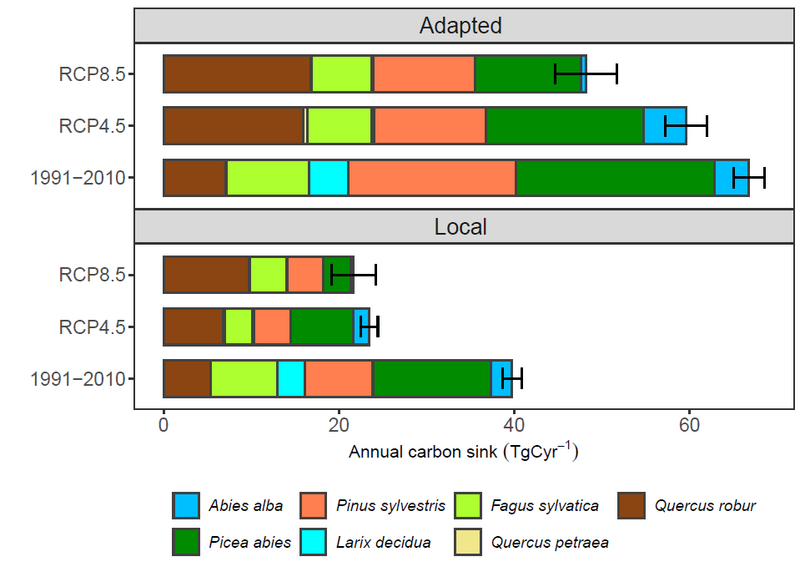A new study recently published in the journal Nature Climate Change shows that simply planting more trees and preserving forests as carbon sinks is not enough to effectively combat climate change. Researchers from the Austrian Research Centre for Forests (BFW) and international partners emphasize the crucial role of “assisted migration” – a strategy that selects those tree species and seed provenances that are best adapted to future climate conditions.
The study, one of the largest of its kind, analyzed data from 587 forest provenance experiments across Europe, in which trees from 2,964 different seed origins are growing. Provenance experiments are long-term field trials that evaluate the performance of trees from different geographic regions. Data from such experiments provide valuable information about the local adaptation, growth and survival of tree populations.
These data were combined with complex models to predict how carbon uptake from the atmosphere will change with climate change for seven important tree species when different afforestation strategies are implemented for the selection of tree species and seed origins.
The results were unequivocal: climate change will alter the suitability of various tree species in large parts of Europe. As a result, the coniferous tree species that have been widely used in the past are likely to be planted less often, while the more resistant deciduous tree species will be planted more. However, the study makes it clear that simply changing the species is not enough.
The models show that the effect of European forests as carbon sinks could decrease significantly by the end of the century if reforestation relies only on local seeds from the region. This would drastically reduce the role of European forests in mitigating climate change.
Trees planted today will have to cope with the climate in 100 years. Therefore, one solution is to carefully select seed sources that are adapted to the predicted climate conditions at the planting site, even if these sources come from geographically distant regions. For example, fir sources from Calabria. This strategy, known as “assisted migration”, exploits the genetic diversity within the tree species, because seed sources have adapted to different climate regions over long periods of time. The authors of the study assume that only with additional sources from other regions can the forests of the future grow well and continue to effectively bind carbon.
The study's findings have profound implications for forest management and nature conservation policy across Europe. The research provides important scientific insights to support the integration of assisted migration into national and transnational forest management strategies. These insights should be implemented as a matter of urgency to ensure the future of forests and their crucial role in climate change mitigation and sustainable timber production.
The study was supported by the INTERREG Central Europe project SUSTREE (Conservation and sustainable utilization of forest tree diversity in climate change) and the Horizon 2020 project SUPERB (Systemic solutions for upscaling of urgent ecosystem restoration for forest-related biodiversity and ecosystem services). SUPERB, which is coordinated by the European Forest Institute, aims to develop links between practical and scientific knowledge about forest restoration and to restore thousands of hectares of forest landscape across Europe.



